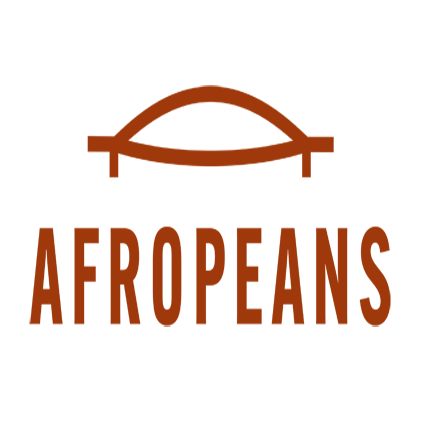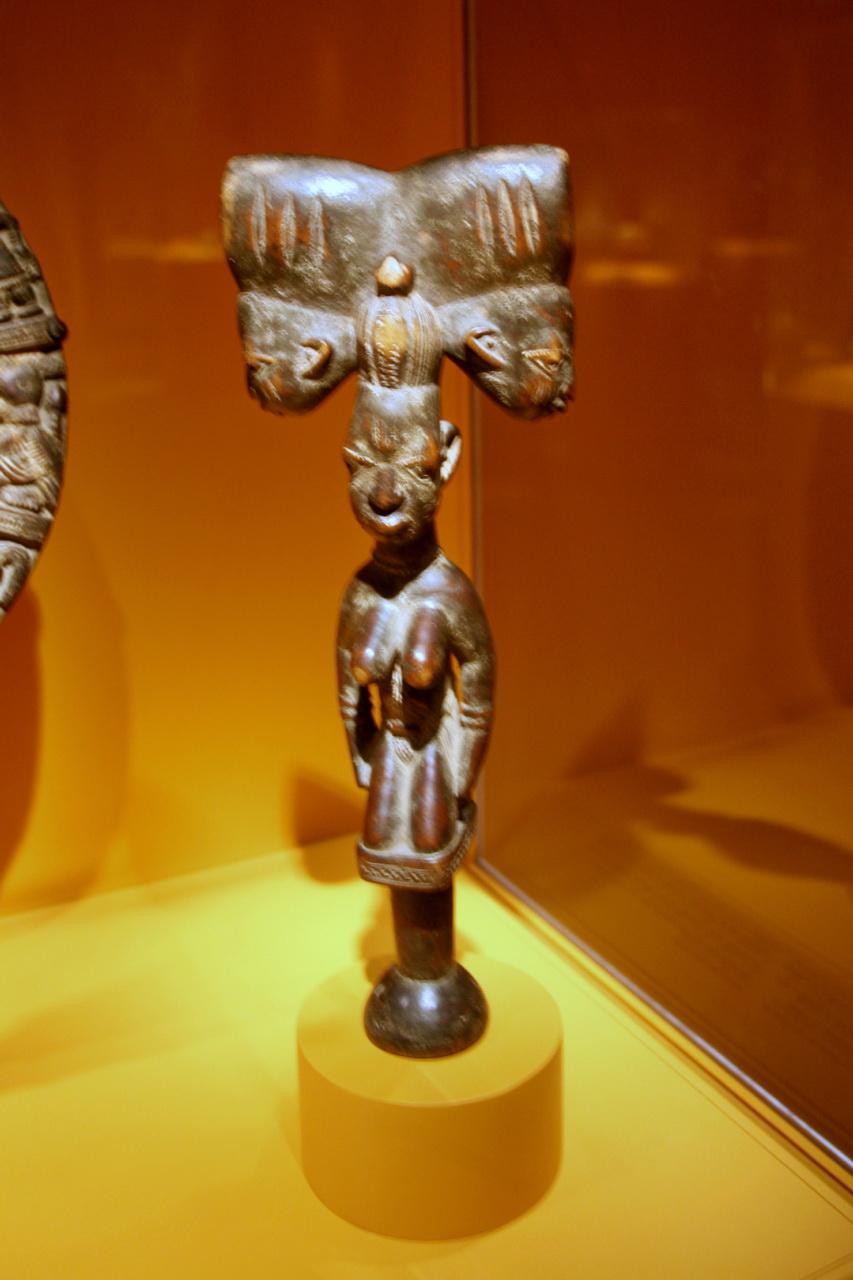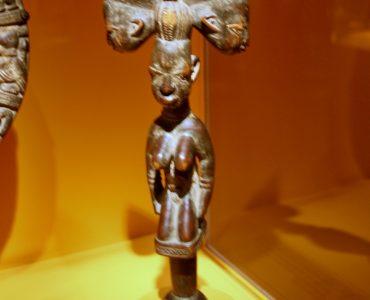Ṣàngó, also known as Changó or Xangô in Latin America; and as Jakuta or Badé) is an Orisha, a type of spirit in Yoruba religion. Ṣàngó is a royal ancestor of the Yoruba as he was the third Alaafin of the Oyo Kingdom prior to his posthumous deification. He is known for his powerful axe. He is considered to be one of the most powerful rulers that Yorubaland has ever produced,. He is also renowned for his anger!
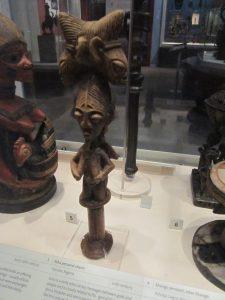 Sango was the third Alafin (King) of Oyo, following Oranmiyan and Ajaka. He brought prosperity to the Oyo Empire. Unlike his peaceful brother Ajaka however, he was a powerful and violent ruler. He reigned for seven years which were marked by his continuous campaigns and many battles. His reign ended due to his inadvertent destruction of his palace by lightning. He had three wives, namely Queen Oshun, Queen Oba, and Queen Oya. Many of those captured as slaves during the demise of the Oyo Empire declined in the 19th century were devotees and worshipers of Ṣàngó. They took this worship with them to the New World as a result. Strong devotion to Ṣàngó led to Yoruba religions in Trinidad and Recife, Brazil being named after the deity.
Sango was the third Alafin (King) of Oyo, following Oranmiyan and Ajaka. He brought prosperity to the Oyo Empire. Unlike his peaceful brother Ajaka however, he was a powerful and violent ruler. He reigned for seven years which were marked by his continuous campaigns and many battles. His reign ended due to his inadvertent destruction of his palace by lightning. He had three wives, namely Queen Oshun, Queen Oba, and Queen Oya. Many of those captured as slaves during the demise of the Oyo Empire declined in the 19th century were devotees and worshipers of Ṣàngó. They took this worship with them to the New World as a result. Strong devotion to Ṣàngó led to Yoruba religions in Trinidad and Recife, Brazil being named after the deity.
In Yorubaland, Sango is worshiped on the fifth day of the week, which is named Ojo Jakuta. Ritual worship foods include guguru, bitter cola, àmàlà, and gbegiri soup. Also, he is worshiped with the Bata drum. One significant thing about this deity is that he is worshiped using red clothing, just as he is said to have admired red attire during his lifetime.
In Yorubaland

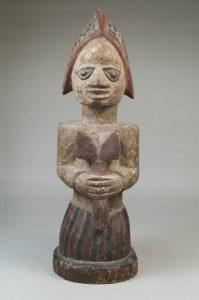 Ṣàngó is viewed as the most powerful and feared of the orisha pantheon. He casts a “thunderstone” to earth, which creates thunder and lightning, to anyone who offends him. Worshippers in Yorubaland in Nigeria do not eat cowpea because they believe that the wrath of the god of iron would descend on them. The Ṣàngó god necklaces are composed in varying patterns of red and white beads; usually in groupings of four or six which are his sacred numbers. Rocks created by lightning strikes are venerated by Ṣàngó worshipers; these stones, if found, are maintained at sacred sites and used in rituals. Ṣàngó is called on during coronation ceremonies in Nigeria to the present day.
Ṣàngó is viewed as the most powerful and feared of the orisha pantheon. He casts a “thunderstone” to earth, which creates thunder and lightning, to anyone who offends him. Worshippers in Yorubaland in Nigeria do not eat cowpea because they believe that the wrath of the god of iron would descend on them. The Ṣàngó god necklaces are composed in varying patterns of red and white beads; usually in groupings of four or six which are his sacred numbers. Rocks created by lightning strikes are venerated by Ṣàngó worshipers; these stones, if found, are maintained at sacred sites and used in rituals. Ṣàngó is called on during coronation ceremonies in Nigeria to the present day.
The Americas
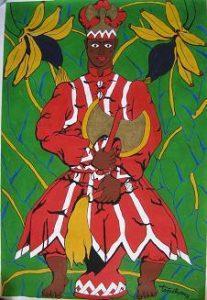 Ṣàngó is venerated in Santería as “Chango”. As in the Yoruba religion, Chango is the most feared god in Santería. In Haïti, he is from the “Nago” Nation, and is known as Ogou Chango. Palo recognizes him as “Siete Rayos”. Ṣàngó is known as Xangô in the Candomblé pantheon. He is said to be the son of Oranyan, and his wives include Oya, Oshun, and Oba, as in the Yoruba tradition. Xangô took on strong importance among slaves in Brazil for his qualities of strength, resistance, and aggression. He became the patron orixa of plantations and many Candomblé terreiros. The main barracão of Ilê Axé Iyá Nassô Oká, or the terreiro Casa Branca, is dedicated to Xangô. Xangô is depicted with an oxê, or double-sided ax similar to a labrys; and a brass crown.
Ṣàngó is venerated in Santería as “Chango”. As in the Yoruba religion, Chango is the most feared god in Santería. In Haïti, he is from the “Nago” Nation, and is known as Ogou Chango. Palo recognizes him as “Siete Rayos”. Ṣàngó is known as Xangô in the Candomblé pantheon. He is said to be the son of Oranyan, and his wives include Oya, Oshun, and Oba, as in the Yoruba tradition. Xangô took on strong importance among slaves in Brazil for his qualities of strength, resistance, and aggression. He became the patron orixa of plantations and many Candomblé terreiros. The main barracão of Ilê Axé Iyá Nassô Oká, or the terreiro Casa Branca, is dedicated to Xangô. Xangô is depicted with an oxê, or double-sided ax similar to a labrys; and a brass crown.
Characteristics
Colors: white and red
Elements: thunder, lightning, fire
Sacred food: Amalá (a stew of okra with shrimp and palm oil)
Instruments: oxê, a double ax; bangles; brass crown; Thunder Stones, or objects struck by lightning
Garment: red cloth with printed white squares or cowrie shells
Necklace or Elekes: white and red beads
Archetype: power, dominance
Sacred dance: alujá, the roda de Xangô. It speaks of his achievements, deeds, consorts, power, and dominion
Sacrificial animals: fresh water turtle, male goat, duck, sheep.
Additional source and pictures – Wikipedia.org
